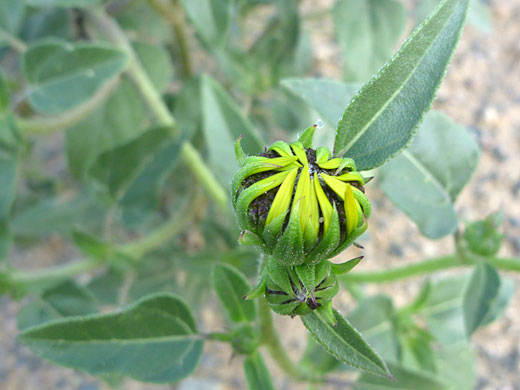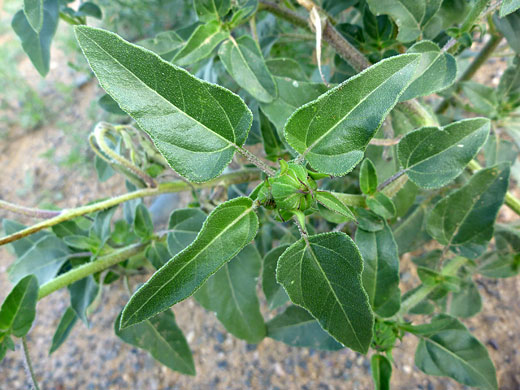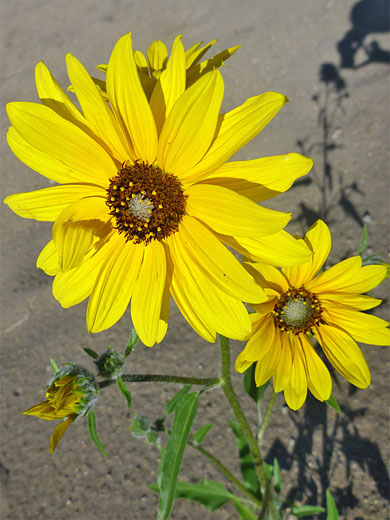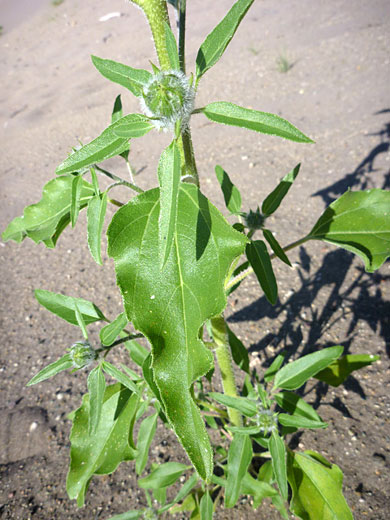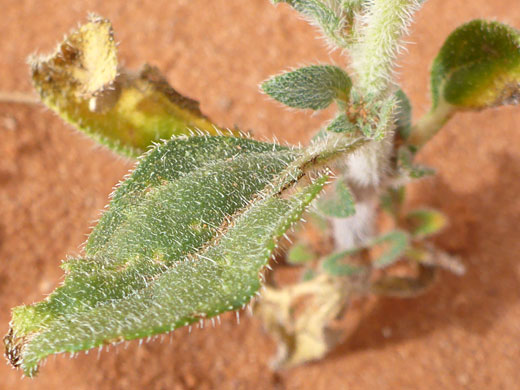
Brown-centered yellow flower of prairie sunflower (helianthus petiolaris) in Angel Peak Scenic Area, New Mexico
Common name:
Prairie sunflower
Family:
Scientific name:
Helianthus petiolaris
Main flower color:
Range:
All the western and Great Plains states, but uncommon in the Pacific Northwest
Height:
Up to 4 feet
Habitat:
Sandy areas, dry grassland, sunny locations
Leaves:
Lanceolate, alternate, up to 5 inches long
Season:
June to September
As its species name suggests, helianthus petiolaris is characterised by leaves on long stalks (petioles). Leaves are lanceolate to ovate to narrowly triangular in shape; these latter are flat at the base, with rounded lower corners and a pointed tip. The surfaces, and edges, have a rough texture. Edges may be slightly wavy. Leaves have a central vein along the full length, and two side veins, reaching the edge about half way along.
Flowers are large, up to 3 inches in diameter, formed of between 12 and 25 broad, grooved yellow ray florets and center of dark brown disc florets. They may be single, or part of small, open clusters. The pointed green bracts underneath the flower heads have a few short, bristly hairs along their edges. The stem is also hairy.
Flowers are large, up to 3 inches in diameter, formed of between 12 and 25 broad, grooved yellow ray florets and center of dark brown disc florets. They may be single, or part of small, open clusters. The pointed green bracts underneath the flower heads have a few short, bristly hairs along their edges. The stem is also hairy.
All Contents © Copyright The American Southwest | Comments and Questions | Contribute | Site Map

